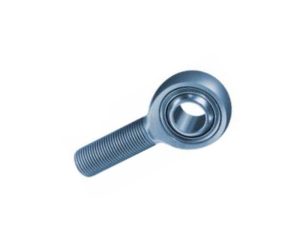
Are you looking to buy rod ends? Also known as heim and rose joints, they are used to create mechanical joints. Rod end bearings feature a threaded rod that’s attached to a bearing.
You can use a rod end to connect two parts while simultaneously allowing for a limited angle of rotation between the connected parts. Regardless of the application, though, there are several things you should consider when choosing rod end bearings.
#1) Internal vs External Threading
All rod end bearings have threading. Threading is found on the rod. While some rod end bearings have internal threading, others have external threading. Rod end bearings with internal threading feature a hollow rod. The inside of the rod has threading. Rod end bearings with external threading feature a solid rod. The exterior of the rod has threading.
#2) Right-Handed vs Left-Handed Threads
There are rod end bearings with right-handed threads, and there are rod end bearings with left-handed threads. Right-handed threads are the most common. You can tighten them by turning them clockwise. Left-handed threads use an alternative thread direction, meaning you’ll have to tighten them counterclockwise.
#3) Lubrication Requirements
You should consider the lubrication requirements when choosing rod end bearings. Because they are connected to moving parts, most rod end bearings require lubrication. Lubrication will reduce friction while subsequently protecting the rod end bearings — as well as the parts — from damage. Some rod end bearings require manual lubrication. Others, however, are self-lubricating. Self-lubricating rod end bearings come pre-oiled or pre-greased.
#4) Material
You can find rod end bearings in different materials. The main shank or rod is typically made of a metal, such as stainless steel or carbon steel. The seal or seals, on the other hand, are typically made of an elastomeric material, such as plastic polytetrafluoroethylene. Before buying rod end bearings, check to see what materials they are made of. The rod should be made of a strong and durable material, whereas the seal or seals should be made of a protective and elastomeric material.
#5) Threads Per Inch
Something else to consider when choosing rod end bearings is threads per inch. Threads per inch is a measurement of how many threads a rod end bearing or fastener has per inch of threaded space. Small rod end bearings typically have smaller, finer threads. Therefore, the threads per inch of small rod end bearings is higher than that of large rod end bearings.



